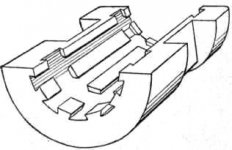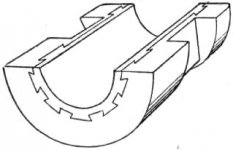There's a very extensive thread on splicing serpentine belts on machines like this.
Heavy 10 serpentine belt??
To save you a lot of reading, I'll tell you that I have found that grinding a 2" lap on the ends of the belt, gluing with Shoe Goo and clamping with a couple of spring clamps makes a very tough splice. I have tried very hard to tear apart a test splice and have failed.
Heavy 10 serpentine belt??
To save you a lot of reading, I'll tell you that I have found that grinding a 2" lap on the ends of the belt, gluing with Shoe Goo and clamping with a couple of spring clamps makes a very tough splice. I have tried very hard to tear apart a test splice and have failed.







